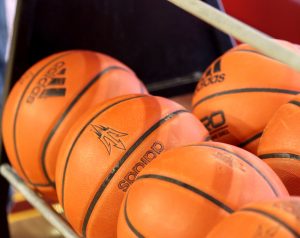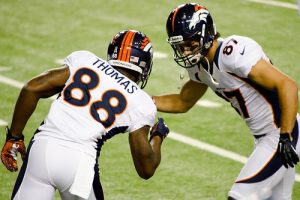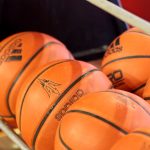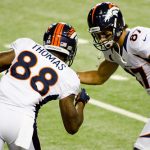Cubs Park in Mesa, AZ on a sunny late October afternoon.
The World Series ended on Wednesday night, and on Thursday afternoon, I was attending a Major League Baseball game. Not one involving a big-league team, but rather, a game involving two teams in the Arizona Fall League.
I’ll admit that before I moved to Phoenix, I thought of the AFL as the old football league. Now, I know the AFL as one of a growing number of extensions of the major league system. Along with the AFL, there is the Arizona Summer Rookie League, held here in June after the annual MLB draft, the Florida Instructional League, where many of those newcomers end up, and of course, the various minor leagues of A, AA and AAA.
The players lined up at the Fall Star Game.
It all adds up to enjoyment for the fans, especially diehard baseball lovers, and a source of revenue for the teams. Parks in Arizona, which might go unused between April and February, get some business. Vendors sell some hot dogs and t-shirts. And scouts and other team personnel get an advance look at the next round of stars.
Here’s how the AFL works. At the end of each season, major league baseball teams contribute players to six teams that play at what are normally Cactus League spring training sites. The teams are divided into two divisions, East (because they play in stadiums on the east side of Phoenix) and West (those from the West valley).
The players are generally here for one of three reasons, says Bernie Pleskoff, a former major league scout for the Houston Astros and Seattle Mariners. (Follow him @BerniePleskoff for daily AFL updates.)
One, they’re promising minor league players, who may or may not have made their team’s 40-man roster at the end of the season. Two, they’re players who’ve been injured and need a few more games of rehab under the sun. Three, they’re working on something — learning to switch hit, in the case of a batter, a new position, in the case of a fielder, or a new pitch, for the hurlers.
The sun sets at the AFL’s Fall Star Game.
To be sure, AFL games are not the draws that spring training games have become. There were only a few thousand fans on hand at Salt River Fields in Scottsdale last Saturday night for the Fall Star Game, pitting players from West teams against those from the East, even though the game was televised on MLB.com and attended by a flock of scouts.
There was a similar sized mini-crowd in Mesa last Thursday, when I sat at Cubs Park with other members of the Society of American Baseball Research, or SABR, which held its AFL conference this past weekend.
These small crowds mean fans have a chance for contact with players, even more easily than at spring training. I wandered down to the West dugout on Saturday night to watch children, men and women seeking signatures and pictures. The players were polite and obliging, even returning after an initial round of signing to chat again.
Players signing autographs at the Fall Star Game.
Before we watched the Mesa Solar Sox take on the Scottsdale Scorpions, we got a tour of Cubs Park. It’s a $100 million facility that some saw as a gamble for the city of Mesa, which sits next to Tempe about a 15 minute drive from downtown Phoenix. How could the city ever recover its investment, some asked, in a park that essentially would be open only two months a year?
Cubs Park, however, was bustling during our visit. Players were taking batting practice in the main park. A short stroll away, there were hitters in the park’s 10 indoor batting cages. Players were doing wind sprints and weight training in a state of the art workout facility. Still more players were strolling to one of the complex’s practice fields.
Cubs officials say something is going on here pretty much 12 months out of the year, well out of sight of fans at Wrigley Field. The same most likely can be said for the other spring training complexes scattered around the Phoenix area.
The Arizona Fall League, it turns out, is just the tip of an iceberg of that year around activity. And, even though the San Francisco Giants won the World Series, baseball, it seems, now really never ends.










